










| Black-palped Jumper (Pseudeuophrys erratica (Walckenaer, 1826)) |











|
|
Scientific name: Pseudeuophrys erratica (Walckenaer, 1826) Common name: Black-palped Jumper French name: Order: Araneae Family: Salticidae Size: 3 to 4 mm for females, 3.5 to 4.25 mm for males. Biotope: Forests, on rocks. Web: No web. Spiders of the silicide family chase by looking at preys with their big size eyes. They move by jumping. Observation period: March to October. Geographic area: Palaearctic region, introduced to the United States. |
Pseudeuophrys erratica is black coloured with brown, reddish and beige hairs. You can see a tie-shaped white marking at the back of the cephalothorax. There are two small white triangular spots at the rear of the abdomen. The legs are clearly ringed with black, reddish and white. Males have black pedipalps at the tip of white femurs and patellae. There is a hairless tubercle on the transition from white to black. The eyes are thinly circled with orange and underlined by thin bands of white hairs. Pseudeuophrys lanigera which is more found in the vicinity of buildings bears a large white triangular marking on the cephalothorax, one pale longitudinal stripe on the upper side of the abdomen. Males' pedipalps are completely white. It is sometimes difficult to tell apart females of both species because the above mentioned criteria are not always easy to evaluate and because of variations from one specimen to the other. |
| [To know more about the Black-palped Jumper] [Next picture] [Top] |
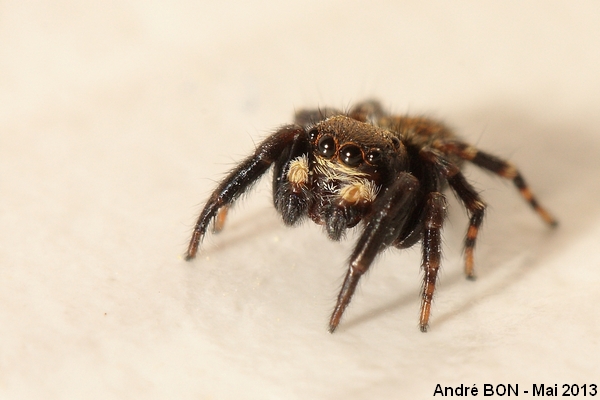
|
The location where I have observed this male, that's to say inside the house, naturally points to the Pseudeuophrys lanigera species but the black pedipalps make me think that this one is Pseudeuophrys erratica. |
| [To know more about the Black-palped Jumper] [Next picture] [Previous picture] [Top] |
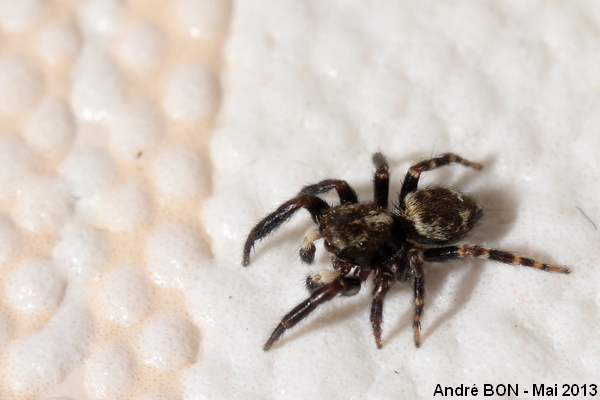
|
The species identification is confirmed by this upper side view, no white triangular markings on the cephalothorax, lack of pale median stripe on the abdomen, presence of two white triangular spots at the rear of the abdomen. |
| [To know more about the Black-palped Jumper] [Next picture] [Previous picture] [Top] |
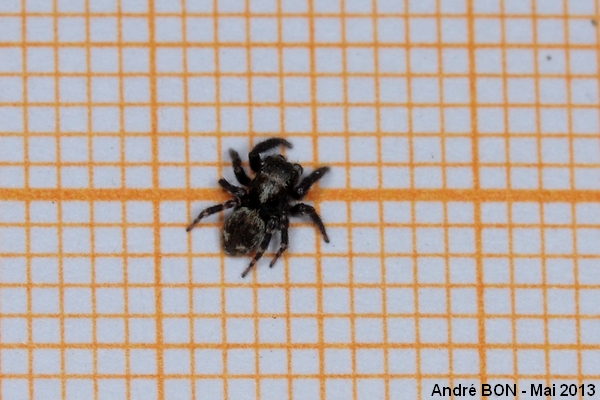
|
I have measured a body size of 3.5mm. |
| [To know more about the Black-palped Jumper] [Next picture] [Previous picture] [Top] |
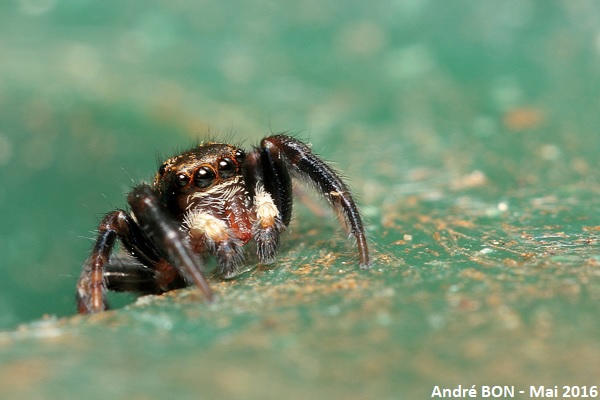
|
You can see the hairless tubercles just above the pedipalps on this front view of a male. |
| [To know more about the Black-palped Jumper] [Next picture] [Previous picture] [Top] |

|
Front view of a female. |
| [To know more about the Black-palped Jumper] [Next picture] [Previous picture] [Top] |
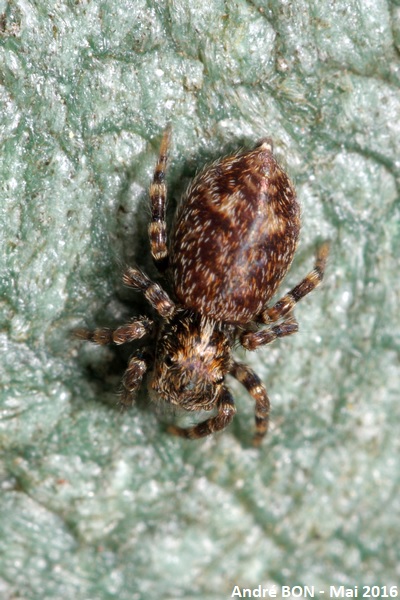
|
The rounded abdomen of this female indicates that it is gravid. |
| [To know more about the Black-palped Jumper] [Next picture] [Previous picture] [Top] |
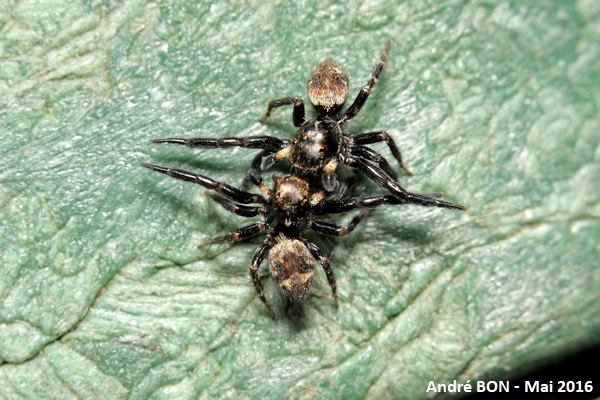
|
Several males seem to compete towards my compost bin. Is it to determine who will be the father of the specimens that I will observe at this place next year? |
| [To know more about the Black-palped Jumper] [Next picture] [Previous picture] [Top] |
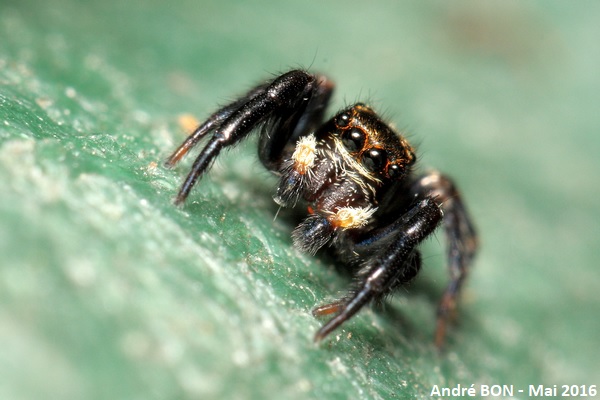
|
Front view of a male. |
| [To know more about the Black-palped Jumper] [Next picture] [Previous picture] [Top] |
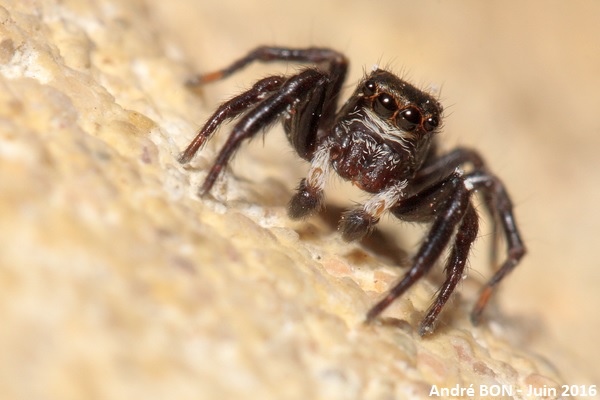
|
Front view of another male. |
| [To know more about the Black-palped Jumper] [Next picture] [Previous picture] [Top] |
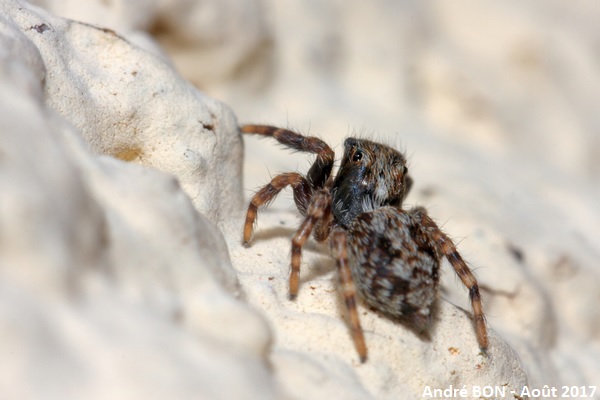
|
This view clearly shows the white tie-shaped marking at the back of the cephalothorax. |
| [To know more about the Black-palped Jumper] [Previous picture] [Top] |
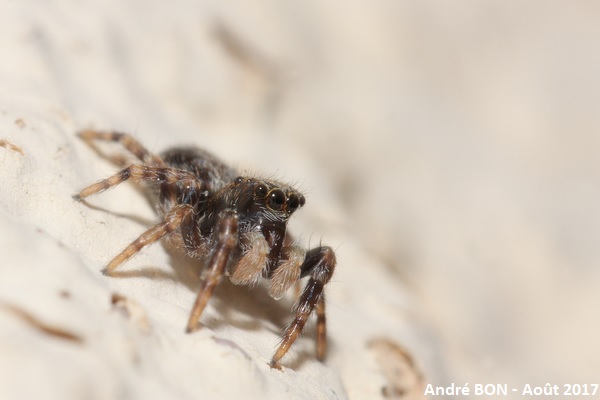
|
All the photos shot on the walls are made by adjusting the focus to the minimum distance allowed by the extension tubes, approaching slowly with support on the wall and triggering as soon as the sharpness is in the desired area. The flash is mandatory with my camera which is starting to date. This requires a static spider for a few tens of seconds. |